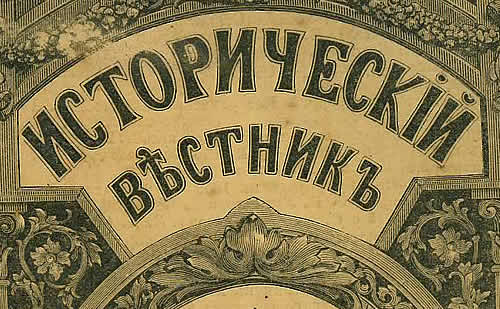DOI 10.35549/HR.2017.2017.34956
Обрезкова Д.В. Императорский консисторий в IV — начале V в. (по данным позднеримского законодательства) империи // Исторический вестник. 2017. Т. ХIХ. С. 89—111.
Obrezkova D.V. Imperial Consistory in the IV — early V century (according to the late Roman Legislation) [Imperatorskij konsistorij v IV — nachale V v. (po dannym pozdnerimskogo zakonodatel'stva)]. Istoricheskij vestnik / The Historical Reporter. Vol. 19. 2019. P. 89–111.
Key Words: Late Roman Empire, Imperial Power, Imperial Council, Consistorium, Consistory Committees, Theodosius Code, Justinian Code.
Ключевые слова: Поздняя Римская Империя, императорская власть, императорский совет, consistorium, комиты консистория, кодекс Феодосия, кодекс Юстиниана.
Abstract
The article is a study of the Late Roman institution of Imperial Council (Сoncistory) that is a direct successor of the Consilium Principis, active during the Principate period. On the basis of legal documents (mainly the constitutional codexes of Theodosius and Justinian) the evolution of the role of this institution in the legislative system at the time of the Late Empire (IV — early V century) is described. The author focuses on the structure and functions of Consistory, main categories of its members as well as the terms used to describe the Imperial council at different periods of time. Results of this study are essential for understanding the character and evolution of the administrative system in the Late Roman Empire as a whole.
Аннотация
Статья представляет собой исследование позднеримского института – Императорского Совета (консистории), который является прямым преемником Консилиума Принципис, действовавщего в период принципата. На основании правовых документов (в основном конституционных кодекс Феодосия и Юстиниана) описана эволюция и роль этого института в законодательной системе поздней Империи (IV – начало V века). Автор акцентирует внимание на структуре и функциях консистории, основных категориях ее членов, а также на терминах, используемых для описания Императорского Совета в разные периоды времени. Результаты этого исследования имеют важное значение для понимания характера и эволюции административной системы в поздней Римской Империи в целом.
References
1. Koptev A.V. The codification of Theodosius and its preconditions [KodifikacijaFeodosija i ee predposylki] // IUS ANTIQUUM. Drevnee pravo. 1996. № 1. P. 247–261.
2. Kulakovskij Ju.A. A history of the Byzantine Empire. Vol.1: years 395–518. [Istorija Vizantii. T.1: 395—518 gody]. SPb., 2003.
3. Cicogna G. Consilium principis. Consistorium. Ricerche di diritto romano pubblico e di diritto privato. Torino, 1902.
4. Consistorium // TLL. Vol. 4. P. 472.
5. De Bonfils G. Il comes et quaestor nell’età della dinastia Costantiniana. Napoli, 1981.
6. De Martino F. Storia della costituzione romana. Vol. 5. Napoli, 1967.
7. Delmaire R. Les institutions du Bas-Empire Romain, de Constantin à Justinien. Vol. 1: Les institutions civiles palatines. Paris, 1995.
8. Demandt A. Geschichte der Spätantike: Das Römische Reich von Diocletian bis Justinian 284–565 n. Chr. S. l., 1998.
9. Jones A.H.M. The Later Roman Empire 284–602: A Social, Economic and Administrative Survey / 3 vols. Oxford, 1964.
10. Seeck O. Comes consistorianus // Paulys Realencyclopädie der classischen Altertumswissenschaft. Bd. 4. Hlfb. 7. 1900.
11. Seeck O. Consistorium // Paulys Realencyclopädie der classischen Altertumswissenschaft. Bd. 4. Hlfb. 7. 1900.
12. Smith R. The imperial court of the Late Roman Empire AD. 300 — AD. 400 // The court society in ancient monarchies / Ed. Spawforth A.J.S. Cambridge, 2007. P. 157–232.
13. Weiss P.B. Consistorium und comites consistoriani: Untersuchungen zur Hofbeamtenschaft des 4. Jahrhunderts n. Chr. auf prosopographischer Grundlage. Würzburg, 1975.

